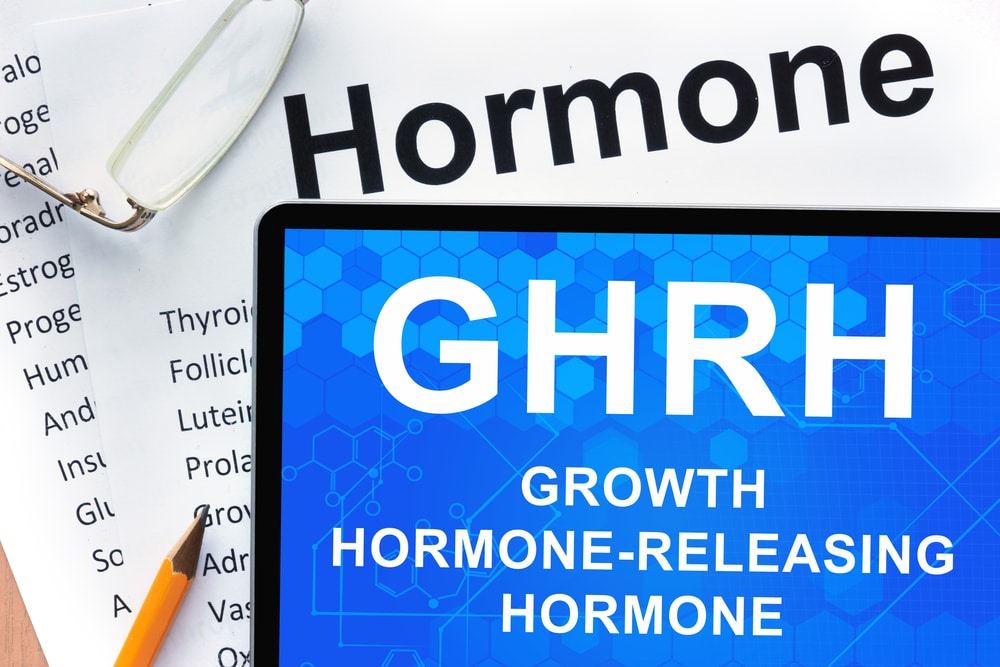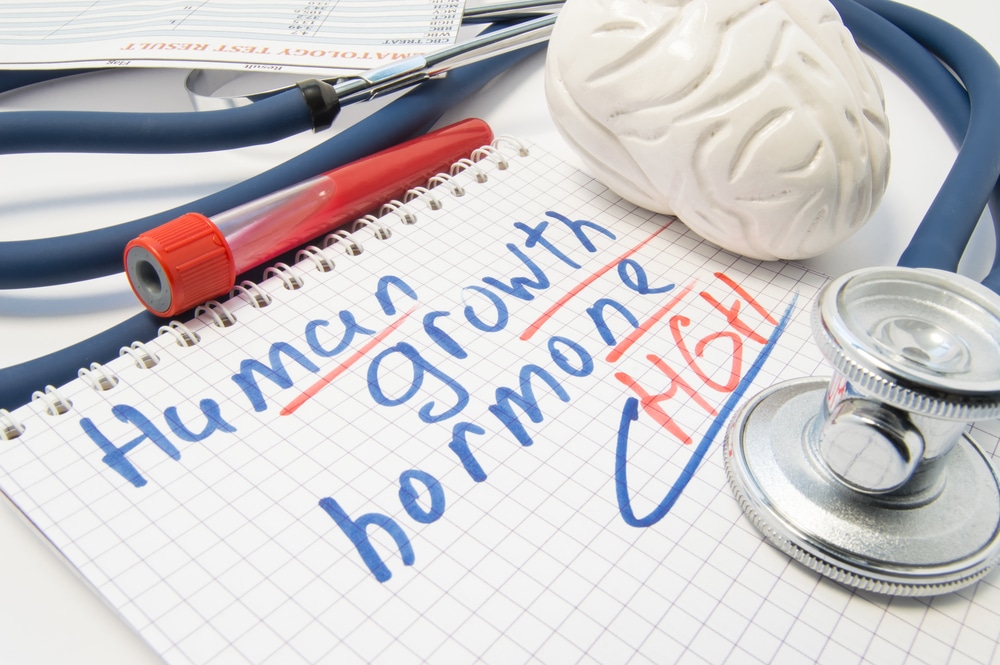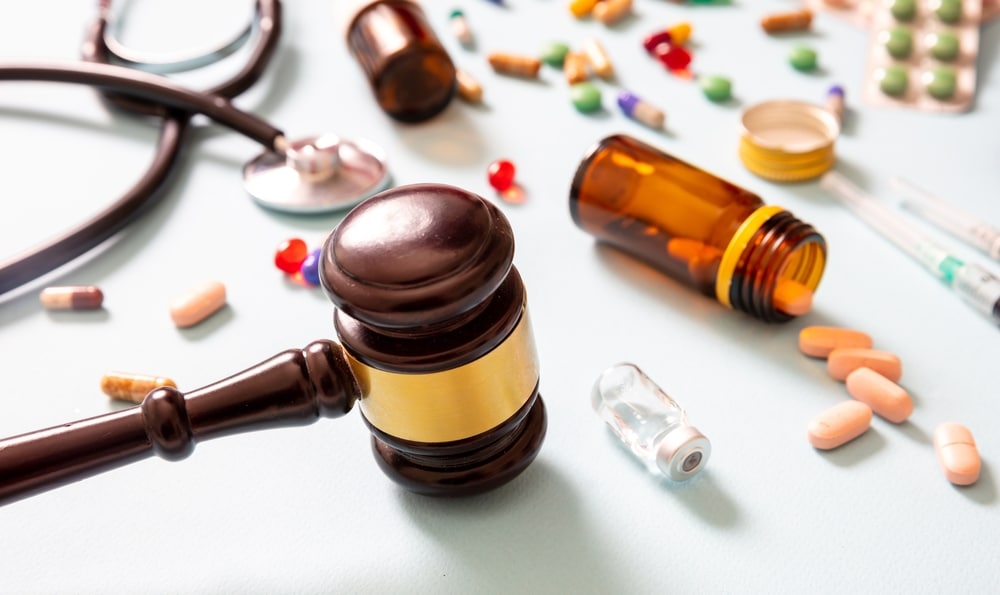
Sermorelin vs. HGH – Key Differences and Benefits Explained
When it comes to choosing the best hormone therapy, understanding the differences between Sermorelin and HGH is crucial.
These two options offer distinct approaches to hormone replacement, each with unique benefits and considerations. Whether you’re a healthcare provider or a sales representative, knowing how Sermorelin stimulates natural hormone production while HGH offers direct supplementation can shape your recommendations and decisions.
This comparison will guide you through their clinical benefits, efficacy, safety profiles, and more, helping you make informed choices as a patients.

What are Sermorelin and HGH?
Human Growth Hormone (HGH) and Sermorelin represent two distinct methods for addressing growth hormone deficiencies.
HGH, also known as somatotropin, is a 191-amino-acid polypeptide naturally produced by the pituitary gland. It plays a vital role in childhood growth and maintaining metabolism throughout life. However, growth hormone levels decline with age, contributing to various aging-related symptoms.
Sermorelin, a synthetic growth hormone-releasing hormone (GHRH), stimulates the pituitary gland to increase natural HGH production. Unlike direct HGH therapy, Sermorelin supports the body’s natural regulatory system, promoting more balanced hormone secretion.
This approach aids in maintaining the body’s natural hormone production, encouraging a sustainable increase in natural HGH production. While both therapies target reduced HGH levels, their mechanisms differ. HGH therapy directly supplements the hormone, bypassing natural processes, whereas Sermorelin stimulates endogenous production.
The differences impact effectiveness, safety, and side effect profiles, making the choice between the two a critical discussion point with healthcare providers.
Sermorelin vs HGH : How Do They Work?
Sermorelin vs HGH function in distinct ways to influence growth hormone levels.
Sermorelin, a synthetic form of GHRH, binds to receptors in the pituitary gland, triggering the production and release of natural HGH. This approach maintains the body’s natural pulsatile secretion patterns, preserving the neuroendocrine balance.
HGH therapy, in contrast, involves the direct injection of synthetic growth hormone. This bypasses the body’s regulatory systems, delivering immediate effects. HGH also stimulates the liver to produce insulin-like growth factor-1 (IGF-1), which mediates many of its benefits, including tissue growth and metabolic regulation.
By encouraging natural HGH production, Sermorelin offers advantages such as sustained hormone regulation and a lower risk of side effects like tachyphylaxis. Ultimately, the decision between Sermorelin and HGH should be guided by individual health needs and medical advice.
At Regenics, we offer Sermorelin therapies under medical supervision to help optimize your growth hormone levels safely and effectively.
Clinical Benefits and Efficacy
Let’s walk you through some of the benefits and efficacy of Sermolin and HGH.
Growth and Recovery Benefits
Sermorelin
Sermorelin takes a more gradual but sustainable approach to enhancing growth and recovery. By stimulating the pituitary gland’s natural production of growth hormone, it promotes steady improvements in muscle development and tissue repair.
You’ll typically notice enhanced recovery from workouts within 3-6 weeks of consistent use, with optimal results appearing after 3-6 months of therapy. The key advantage lies in its ability to maintain your body’s natural growth hormone rhythm.
Maintaining this rhythm results in more stable and sustainable muscle growth, showing improvements in lean muscle mass continuing steadily over 6-12 months of treatment. The natural stimulation also supports better sleep quality, which is crucial for recovery and tissue repair.
HGH
HGH delivers more immediate and pronounced effects on muscle growth and recovery. Direct supplementation leads to rapid increases in muscle mass.
You may experience noticeable changes within 2-4 weeks. The acceleration of tissue repair is also particularly significant, offering faster recovery times from intense physical activity or injury. The direct administration of growth hormone provides a powerful stimulus for protein synthesis and cell regeneration.
This results in more rapid muscle development and enhanced strength gains compared to Sermorelin, though the effects may be more pronounced initially and then plateau.
Metabolic and Body Composition Effects
Sermorelin
Sermorelin’s impact on metabolism and body composition works through your body’s natural regulatory systems.
This approach leads to steady improvements in fat metabolism, offering gradual but consistent reductions in body fat percentage over 3-6 months. The natural stimulation of growth hormone production helps optimize your metabolic rate without overwhelming your system.
The benefits include enhanced bone density development and improved insulin sensitivity, supporting long-term metabolic health. You’ll notice progressive improvements in energy levels and stamina, typically becoming apparent within the first month of treatment.
HGH
HGH demonstrates more aggressive effects on body composition, accelerating fat loss, particularly in stubborn areas like visceral fat.
You may experience significant changes in body composition within 6-8 weeks – up to 14% reduction in body fat percentage over 6 months of treatment. The direct supplementation also leads to rapid improvements in energy levels and metabolic rate.
However, this comes with the need for careful monitoring of insulin sensitivity and glucose metabolism to prevent potential adverse effects.
Quality of Life Improvements
Sermorelin
Sermorelin offers comprehensive quality of life improvements through its natural approach.
Users report enhanced sleep quality within the first few weeks, leading to better mental clarity and emotional well-being. The therapy also supports immune system function, improving resistance to infections and faster recovery from illness.
The improvements in skin health and elasticity develop gradually, with optimal results typically seen after 3-6 months of consistent use. This includes better skin texture and reduced appearance of fine lines, achieved through enhanced natural collagen production.
HGH
HGH provides more immediate quality of life enhancements, with users experiencing rapid improvements in energy levels and cognitive function.
The direct supplementation leads to quick improvements in skin elasticity and appearance, often noticeable within the first month of treatment. Cardiovascular benefits are also more pronounced with HGH, showing improved heart function and blood vessel health in clinical studies.
However, these rapid improvements require careful monitoring to maintain optimal hormone levels and prevent potential side effects.
Safety Profile and Side Effects
When comparing Sermorelin and HGH therapies, their distinct mechanisms of action significantly influence their safety profiles. Sermorelin’s approach of stimulating natural growth hormone production offers several safety advantages over direct HGH supplementation.
Sermorelin Safety Profile
Sermorelin generally presents a more favorable safety profile due to its natural regulatory mechanism. By stimulating the pituitary gland to produce growth hormone, it maintains the body’s inherent feedback systems, reducing the risk of hormone level irregularities.
Common side effects of Sermorelin are typically mild and include:
- Injection site reactions (irritation, itching, or redness)
- Temporary headaches
- Minor dizziness
- Mild nausea
- Occasional taste changes
These reactions usually resolve without intervention and often diminish as treatment continues.
HGH Safety Considerations
Direct HGH supplementation carries more significant risks due to bypassing the body’s natural regulatory mechanisms. Research has identified several concerning potential side effects:
- Increased risk of acromegaly (abnormal growth of hands, feet, and facial features)
- Higher likelihood of developing joint pain
- Greater potential for insulin resistance
- Risk of carpal tunnel syndrome
- Fluid retention issues
The direct introduction of growth hormone can lead to unnaturally high hormone levels, potentially disrupting various bodily functions.
Long-term Safety Implications
Long-term safety data favors Sermorelin over HGH therapy.
Since Sermorelin works with your body’s natural growth hormone production mechanisms, it presents fewer risks for extended use. Sermorelin’s controlled increase in growth hormone levels results in fewer complications compared to direct HGH administration.
For both treatments, medical supervision is essential. Regular monitoring of IGF-1 levels helps ensure proper dosing and minimizes potential complications. Any treatment plan should include periodic assessments to evaluate hormone levels and adjust dosing as needed.
The choice between these treatments should carefully weigh individual health factors, treatment goals, and potential risks. While both options can be effective, Sermorelin’s natural approach to hormone regulation often makes it a safer choice for long-term hormone optimization therapy.
Patient Selection and Treatment Protocol
When considering growth hormone therapy, patient selection and proper administration protocols are crucial for optimal outcomes. The choice between Sermorelin and HGH depends on specific patient factors and treatment goals.
Patient Selection Criteria
Sermorelin is primarily indicated for children with poor growth and adults with diagnosed hGH deficiency.
However, certain patients should avoid Sermorelin therapy, including those with untreated hypothyroidism, allergies to the medication, and women who are pregnant or breastfeeding. HGH therapy is typically reserved for patients with severe growth hormone deficiencies requiring immediate intervention, particularly when rapid hormone replacement is necessary.
Administration Protocols
Sermorelin is administered through daily subcutaneous injections, ideally at night to align with the body’s natural growth hormone production patterns.
The injection should be given in fatty tissue areas, typically in the stomach or thigh, with rotation of injection sites to prevent tissue irritation. Before injection, the vial stopper must be cleaned with an antiseptic to prevent contamination.
HGH administration requires more careful monitoring due to its direct hormone supplementation approach. Your healthcare provider will determine specific dosing based on individual factors and treatment goals.
Monitoring Requirements
Both therapies require regular medical oversight, but with different focuses.
For Sermorelin, monitoring is less intensive due to its natural feedback mechanisms that help prevent overdose. However, patients should be screened for potential drug interactions, particularly with thyroid medications, glucocorticoids, and insulin.
Regular blood tests are essential to track hormone levels and adjust dosing as needed. This monitoring helps ensure optimal results while minimizing potential side effects and maintaining safety throughout the treatment period.
Cost and Accessibility Considerations
When choosing between Sermorelin and HGH treatments, you’ll need to consider several practical factors beyond just their medical benefits.
Both treatments require a prescription and ongoing medical supervision, but there are important differences in their accessibility and regulatory framework. HGH therapy is strictly regulated and only approved for specific medical conditions, such as diagnosed growth hormone deficiency.
The restricted approval status often affects insurance coverage, potentially limiting accessibility to those with specific diagnosed conditions. The treatment requires regular monitoring and adjustments by healthcare providers to ensure proper dosing and minimize potential side effects.
Sermorelin, while also requiring a prescription, is frequently used off-label for adult growth hormone deficiency. Due to its off-label status, insurance coverage can be affected, often making it a self-pay treatment. However, its mechanism of action works with your body’s natural processes, typically requiring less intensive monitoring than direct HGH administration.
Both treatments must be administered via injection, requiring either regular clinic visits or proper training for self-administration at home. Healthcare providers need to consider their patients’ ability to maintain the prescribed treatment schedule and proper injection techniques when recommending either option.
The regulatory framework surrounding these treatments also impacts their availability through medical practices. HGH is classified as a controlled substance with strict prescribing guidelines, while Sermorelin, though still requiring medical oversight, has somewhat more flexible prescribing protocols.
This difference can affect both the availability of the treatments and the administrative requirements for healthcare providers offering these services.

Legal Status and Prescription Requirements: Sermorelin vs. HGH
The legal status and prescription requirements for Sermorelin and Human Growth Hormone (HGH) vary significantly.
Sermorelin is not classified as a controlled substance by the U.S. Drug Enforcement Administration (DEA), but it remains a prescription-only medication that requires a doctor’s approval. It is often prescribed for off-label uses, such as enhancing growth hormone levels in aging adults.
HGH, on the other hand, has a stricter legal classification. In some states, it is considered a controlled substance and can only be prescribed for specific FDA-approved conditions, such as growth failure in children and certain adult disorders like growth hormone deficiency. Legal marketing of HGH products in the U.S. requires an approved biologics license application.
Both Sermorelin and HGH are typically administered via injection. To ensure safe and effective treatment, it is essential to obtain these medications through licensed healthcare providers following proper evaluations. Acquiring them without a valid prescription is both illegal and risky.
Making an Informed Treatment Choice
When selecting between Sermorelin and HGH therapy, the decision should be guided by careful consideration of patient profiles and therapeutic objectives.
For individuals seeking long-term hormone optimization with minimal interference in natural processes, Sermorelin presents an attractive option. Its ability to stimulate endogenous hormone production while maintaining the body’s regulatory mechanisms makes it particularly suitable for age-related hormone decline management.
Conversely, HGH therapy may be more appropriate for patients requiring rapid intervention, such as those with diagnosed growth hormone deficiencies or specific medical conditions demanding immediate hormone supplementation.
The direct administration of synthetic growth hormone can provide faster results in muscle growth, fat loss, and recovery, though this comes with a need for more careful monitoring. For personalized guidance on hormone optimization and to determine which therapy aligns with your specific needs, Regenics offers comprehensive hormone assessments and customized treatment plans.
Contact us today to get help from our experienced specialists in navigating your options while considering your unique health objectives and lifestyle factors.